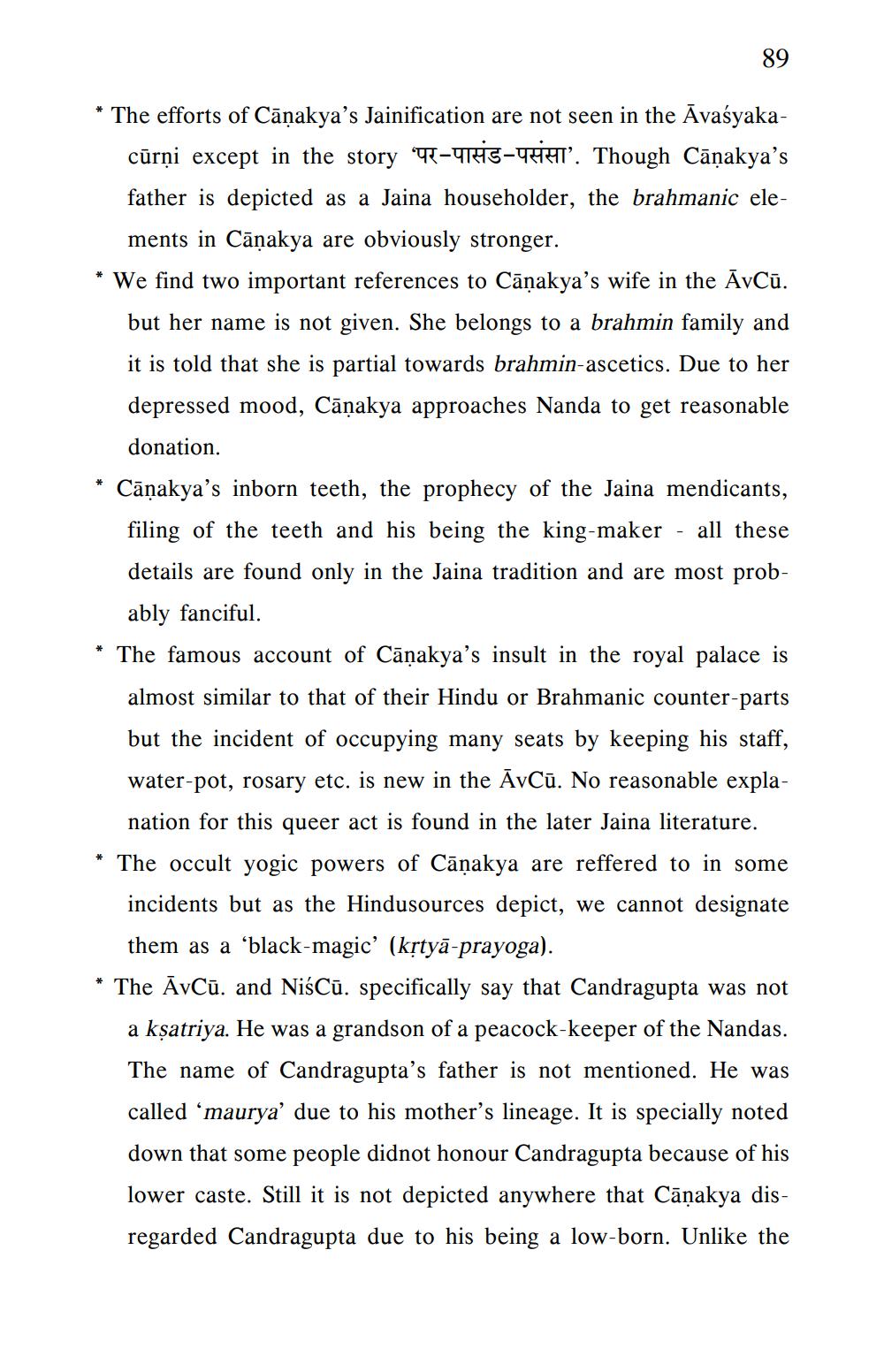________________
* The efforts of Cāṇakya's Jainification are not seen in the Avaśyakacūrni except in the story 'पर - पाखंड - पसंसा'. Though Cānakya's father is depicted as a Jaina householder, the brahmanic elements in Caṇakya are obviously stronger.
We find two important references to Caṇakya's wife in the AvCu. but her name is not given. She belongs to a brahmin family and it is told that she is partial towards brahmin-ascetics. Due to her depressed mood, Caṇakya approaches Nanda to get reasonable donation.
*
89
*
Caṇakya's inborn teeth, the prophecy of the Jaina mendicants, filing of the teeth and his being the king-maker all these details are found only in the Jaina tradition and are most probably fanciful.
The famous account of Cāṇakya's insult in the royal palace is almost similar to that of their Hindu or Brahmanic counter-parts but the incident of occupying many seats by keeping his staff, water-pot, rosary etc. is new in the AvCu. No reasonable explanation for this queer act is found in the later Jaina literature. The occult yogic powers of Cāṇakya are reffered to in some incidents but as the Hindusources depict, we cannot designate them as a 'black-magic' (kṛtyā-prayoga).
The AvCu. and NiśCu. specifically say that Candragupta was not a kṣatriya. He was a grandson of a peacock-keeper of the Nandas. The name of Candragupta's father is not mentioned. He was called 'maurya' due to his mother's lineage. It is specially noted down that some people didnot honour Candragupta because of his lower caste. Still it is not depicted anywhere that Caṇakya disregarded Candragupta due to his being a low-born. Unlike the




